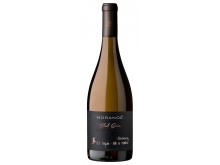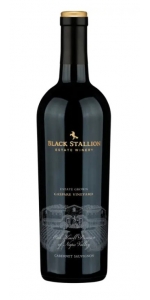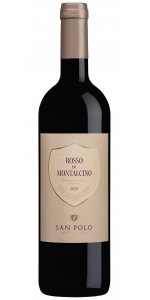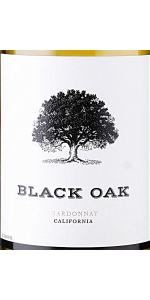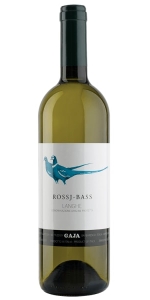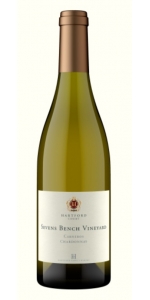Morande Black Series Chardonnay 2021
6 bottles with free shipping for: $210.00
12 bottles with free shipping for: $360.00
| BUY MORE! SAVE MORE! | ||||||||||||||||||||
|
| Country: | Chile |
| Region: | Malleco Valley |
| Winery: | Vina Morande |
| Grape Type: | Chardonnay |
| Organic: | Yes |
| Vintage: | 2021 |
| Bottle Size: | 750 ml |
Morande Black Series Chardonnay is made from 100 percent Chardonnay.
Malleco represents the exploration of one of the most extreme valleys in Chile for wine production. A new wine frontier, an ideal terroir to produce high-end Chardonnay in Chile, with a different style from other outstanding origins such as Limarí –which offers wines with marked minerality– or Aconcagua Costa –which delivers sharp acidity and great power. The Traiguen area in the Malleco valley produces wines of great tension and fruity austerity, as well as complexity, balance and finesse. A very typical style of Chardonnay marked by elegance, verticality on the palate and subtlety on the nose and mouth.
The wine offers a bright pale yellow color, intense and elegant aromas of citrus fruits and green apples as well as hints of nuts, such as hazelnuts and roasted chestnuts. A tense and fresh acidity on the palate, and a vertical structure in the mouth. Very fine and complex, its long persistence highlights the austere character of its fruit and a delicate minerality.
Shellfish and fish of intense flavor, such as smoked salmon, swordfish, giant perch, and white meats, poultry.
Review:
"Fresh and pure on the nose with green fruits and lots of star fruit, a hint of flint and a slight creamy edge. Subtle and bright with a tense mid-palate that creates a creamy but fresh mouthfeel. Medium- to full-bodied and long. Drink now."
- James Suckling (February 2023), 94 pts
When Pablo Morandé founded Viña Morandé in 1996, he did it with a great vision for the future and with the same audacity that drove him, years earlier, to be the first person to plant vines in the Casablanca Valley. They also aimed at using less renowned varieties that have been traditionally grown there. It may be worth remembering that, since the very beginning of Viña Morandé, the old vineyards grown in the Secano have had a special meaning for the winery. On one hand, Maule, and particularly the area of Cauquenes, is the place of birth of their founder. And on the other, the winery has developed an important viticultural work throughout the years in its different terroirs, crafting wines that have been present since the first day in their portfolio.
Today Casablanca is one of the most internationally recognized wine regions for the quality of its wines. Its primary geographic condition is its maritime influence, which enters from the Pacific Ocean and produces morning fog that moderates the temperatures. This characteristic encourages optimal vineyard development, which demands special care to reach the desired ripeness. The varieties that grow best in Casablanca are Chardonnay, Sauvignon Blanc, and Pinot Noir.
The Belen property is located in the Lo Ovalle sector of the Casablanca Valley. The 130 hectares of vineyards were planted in two stages, the first in 2004 and the second in 205. The vineyard density is 10,101 plants/hectare with a distance of 1.5 meters between rows and 0.00 meters between plants.
Our 2021 Gaspare Vineyard Cabernet Sauvignon is made from our grapes grown on the BSEW Estate in the Gaspare Vineyard blocks. Our vineyard is located in the Oak Knoll District of Napa Valley, which is known for it’s moderate growing climate which encourages consistent ripening throughout the growing season. Our 2021 vintage exhibits aromas of blackberry, brown sugar and cedar. It has a dark fruit flavor finished by powerful but elegant.
Review:
The 2021 Gaspare Vineyard Cabernet Sauvignon has a deep garnet-purple color. The nose is a little trapped behind the oak at this youthful stage, allowing glimpses and blackcurrant jelly and juicy plums notes with hints of menthol and anise. Full-bodied, the palate similarly sports a good amount of oak, backed up by the seductive black fruits and approachable, grainy tannins, finishing with a spicy kick.
-Wine Independent 93 Point
Bright and glossy ruby red in color. On the nose it reveals aromas of small fresh berries and a trace of sour cherry, melded with hints of blackberries and black cherries, followed by a hint of vanilla. A fragrant wine with satisfying intensity. On the palate it is warm, smooth and a medium-bodied with finely-balanced tannins. Dry and sinewy yet fresh with a persistent, aromatic finish.
It naturally accompanies dishes that are typical of Tuscan cuisine with its bold, authentic flavors, such as pasta and risottos made with mushrooms or truffles, pork, grilled meats and medium-matured cheeses.
Review:
Notes of ripe cherries, dried flowers and walnuts with hints of anisette and licorice. Medium- to full-bodied, compact and dense with creamy tannins and steady acidity. Weighty and structured. Drink or hold.
-James Suckling 91 Points
Argot Simpatico Ranch Chardonnay is made from 100 percent Chardonnay.
Powerful aromas of key-lime, white flowers, orange blossoms and a fierce, flinty, sauvage note define a wildly complex nose. Once in the mouth, gracefully pronounced textures coat the palate delivering an exotic interpretation of cool-climate Chardonnay character — lime peel, orange blossom, ginger and clove —lingerings deep into a vibrant finish.
Planted 1978. Shallow volcanic soils on the gently-sloped, south-facing foothills of Bennett Peak on Bennett Valley’s floor. One of California’s coolest Chardonnay vineyards. In the final year of 3-year draught cycle, Simpatico Ranch saw its earliest ever harvest and smallest crop, exposing a reserve of exoticism and minerality previously untapped. A watershed vintage for both the vineyard, and appellation. Night harvested by hand on 9/16, whole-cluster pressed direct to barrel; no settling to ensure maximum lees contact. Barrel fermented on heavy lees. Malolactic fermentation. 16 months in French oak, 50% new. Finished 2 months in steel tank, low Sulphur during barrel elevage.
Review:
The 2021 Chardonnay Simpatico Ranch needs a lot of swirling before it shoots from the glass with notes of lemon tart, orange blossoms, candied ginger, and fresh nectarines with hints of crushed rocks, struck flint, and nutmeg. The medium to full-bodied palate delivers amazing tension, with tight-knit citrus and spice layers and a fantastically well woven satiny texture, finishing long and layered. "We only get about 1.5 tons per acre here," said owner/winemaker Justin Harmon. "This comes from old vines on AXR rootstock."
-Wine Independent 97 Points
There are wonderful aromas of summer-ripe peaches with tropical fruits and flowers. The silky-smooth flavors are reminiscent of baked apples and toasty vanilla bean. The lively acidity makes this an extremely well-balanced Chardonnay. The finish is long and fruity, with an interesting hint of hazelnuts. This wine’s overall taste profiles is creamy with apricots and lemons.
2021 Rossj-Bass displays the main features of the vintage well, with intense fruit concentration and floral notes. The nose shows ripe citrus notes of lemon peel and orange evolving into tropical fruits. The richness of the nose and the same notes are reflected on the palate, where remarkable acidity balances the fruit concentration. The wine is rich, full-bodied and creamy, with a long finish.
Review:
The 2021 Gaja Rossj-Bass starts off with very, crisp, green fruit and much more Sauvignon Blanc dominant aromas of grassy, bright, fragrant green apple and green pepper - all very bright and cheerful. Then Chardonnay seems to take over in the medium-full bodied and pleasing creamy texture of the wine. This is balanced again by the tangy, juicy acidity of Sauvignon. This is very elegant blend of Sauvignon Blanc aromas and zestiness and the textural comfort of Chardonnay. The name Rossj is a nickname of Angelo Gaja’s second daughter, Rossanna.
-Wine Independent 94 Points
2018 Hartford Family Winery Hartford Court Sevens Bench Vineyard Chardonnay is made from 100 percent Chardonnay.
True to its Carneros roots, the 2021 Sevens Bench Chardonnay carries the hallmark of the region – fruit intensity balanced by good acidity. The aromas are driven by classic lemon drop, Meyer lemon, and lemongrass. That fruit style follows in the flavors, with the citrus focus carrying through with candied lemon drop balanced by the mineral and flint characteristics inherent to the region and the clonal selections. Barrel fermentation notes in the background add even more complexity to this elegant wine.
Review:
"A more opulent style with a richer golden hue, the 2021 Chardonnay Sevens Bench Vineyard takes on more tropical ripe fruits in its notes of golden pineapple, baking spice, and orange zest. Full-bodied, with a rich yet clean, viscous texture, ripe peach, honeysuckle, and citrus oil, it's long on the palate and has nice balance. Drink it now or over the next 6-8 years. —Audrey Frick, jebdunnuck.com, July 2023 94 Points
- back
Collemattoni Brunello di Montalcino is made from 100 percent Sangiovese.
Color: brilliant red with burgundy reflects; Bouquet: penetrating with memories of wild black fruits, black cherry and noble wood; Taste: warm, dry and persistent
Coming from a parcel with 10-15 year old vines planted in sandy clay and marl soils.
Harvest is 100% destemmed with a soft pressing, fermentation in stainless steel tanks at controlled temperature of 28-30°C, pumping over for the first week of maceration followed by skin-contact maceration for 20-25 days with rack and return technique (delestage).
Malolactic fermentation completed.
Wine is slightly filtered before bottling.
Review:
"Black cherry and plum with a touch of smoke , vanilla. And toast on the nose. Powdery tannins coat the mouth and has a long persistence. Powerful and fresh while a little warming on the finish."
- Decanter Wolrd Wine Awards (June 2023), 97 pts
Louis Roederer Cristal Vinotheque Edition Brut Millesime 1997 is made from Pinot noir (62%) and Chardonnay (38%).
Color
A bright and shimmering golden color, animated by an ultra-fine and swirling effervescence.
Nose
The bouquet is pure, precise and complex, mixing aromas of white flowers, almond, honey and nougat. Upon aeration, notes of red fruits and smoke are revealed, followed by warm and caramelized nuances reminiscent of macaroon, baked apples and tarte tatin.
Palate
Indulgent and velvety, the palate is rich while maintaining a great freshness thanks to a delicate effervescence. The flavors of candied Corsican citron stretch out on a finish marked by a chalky, powdery and iodized freshness, offering a dense texture and a serene length.
The property
Founded in 1776 in Reims, the Louis Roederer Champagne House has remained family-owned and independent. After more than 200 years of existence, the Louis Roederer House is still in the hands of the same family. Today led by Frédéric Rouzaud, who represents the seventh generation of the lineage, the Louis Roederer House embodies the excellence of Champagne wines around the world thanks to cuvées crafted like a work of art.
The vineyard
With nearly 241 hectares of vines, the Louis Roederer House draws its strength from its extraordinary vineyard, composed only of Grands and Premiers Crus in the Marne Valley, the Montagne de Reims and the Côte des Blancs. A true mosaic of terroirs, the Louis Roederer House's vineyard is divided into 410 plots that reflect all the diversity of the Champagne soils.
The wine
Cristal Vinothèque 1997 is made from three great vineyards known as "La Rivière", "La Montagne" and "La Côte".
The vintage
The spring of 1997, mild at first, was marked by an early bud break followed by severe frosts in April that damaged the vineyards of Verzenay and Verzy. After an early flowering in June, the rainy and cold weather until August favored the development of mildew and rot. Fortunately, the return of warm and sunny weather in August and September saved the vintage, with harvests taking place under radiant sunshine from September 15 to October 1.
Vinification and aging
Vinification is carried out in wood to the extent of 6%. Malolactic fermentation (16%). The cuvée was aged for 15 years on lees, 5 years on points and benefited from a rest of 4 years after disgorging. The dosage of this 1997 vintage champagne is 8 g/liter.
Review:
Intense nose of preserved lemons, salted yellow plums, walnuts, toast, salted caramel, roasted chestnuts and dried pineapple. Beautiful and complex, from 15 years, 5 years en pointe, before disgorgement in 2018. Delicious, salty toffee character. Soft, silky bubbles. Long and powerful. Thought-provoking. Unique. Will be launched in September 2022. Drink on release or hold.
-James Suckling 99 Points

